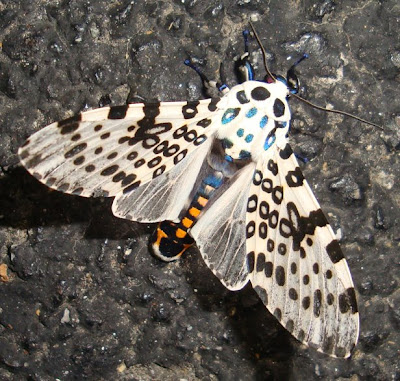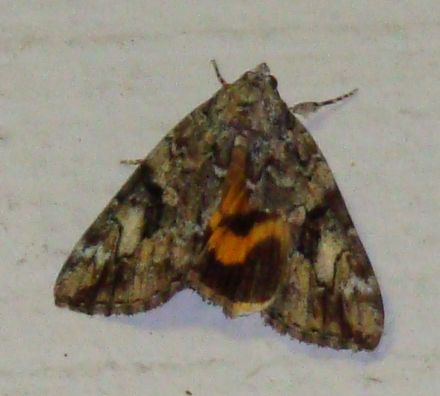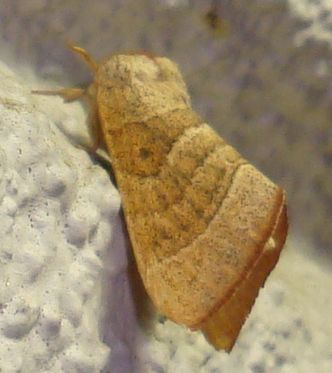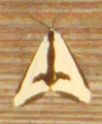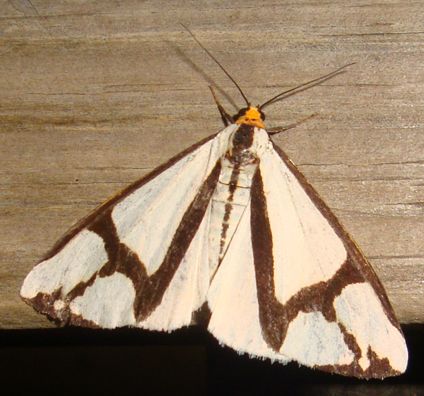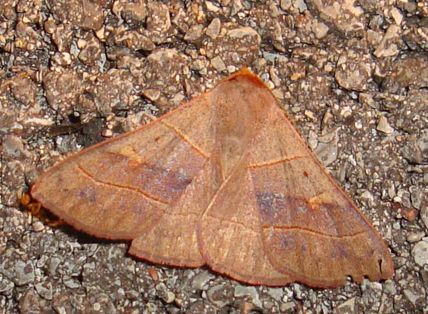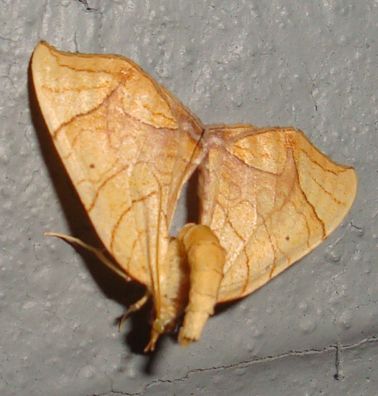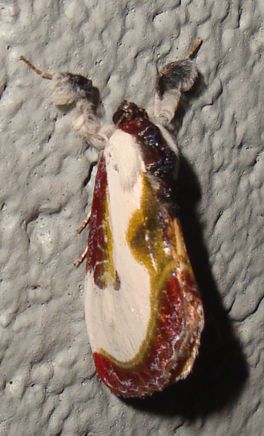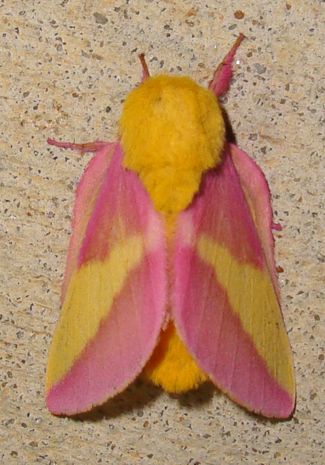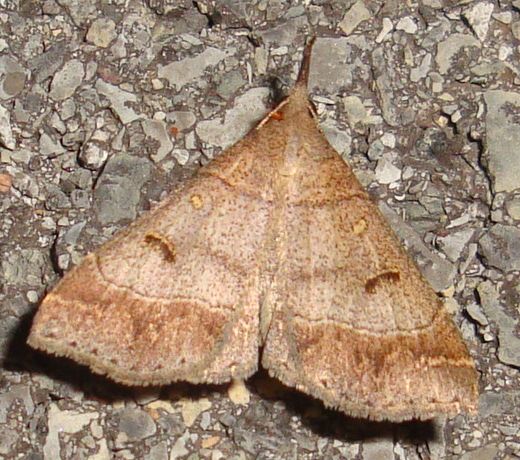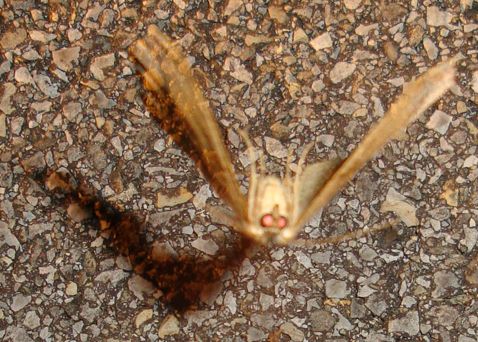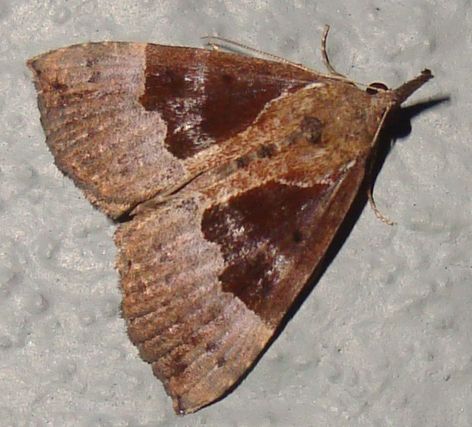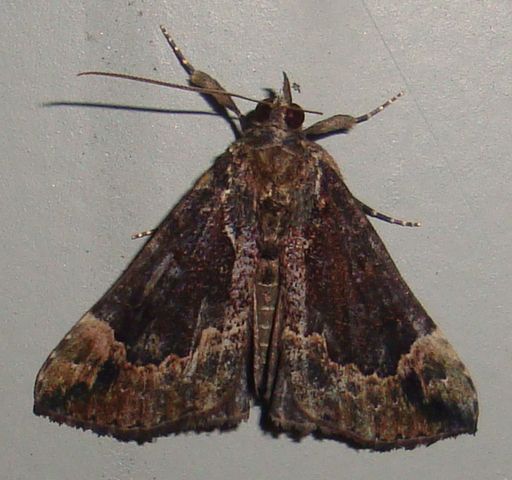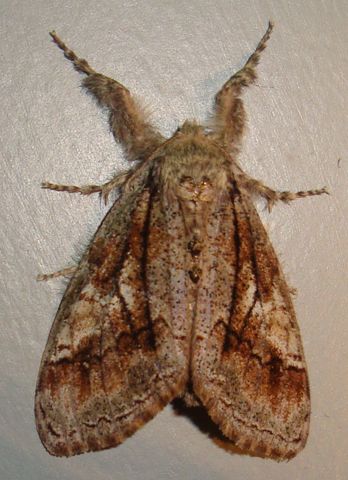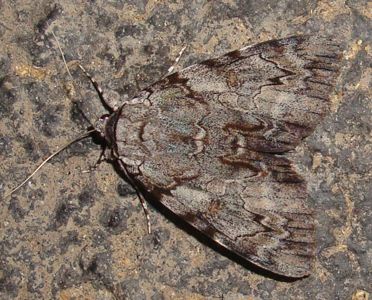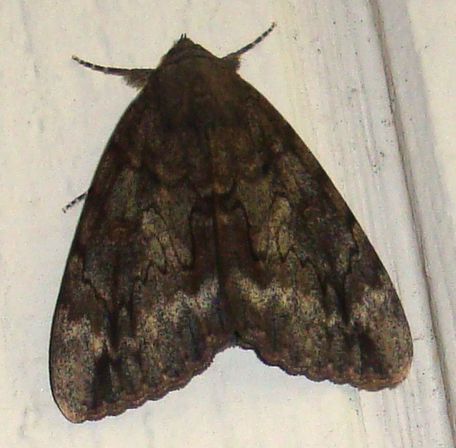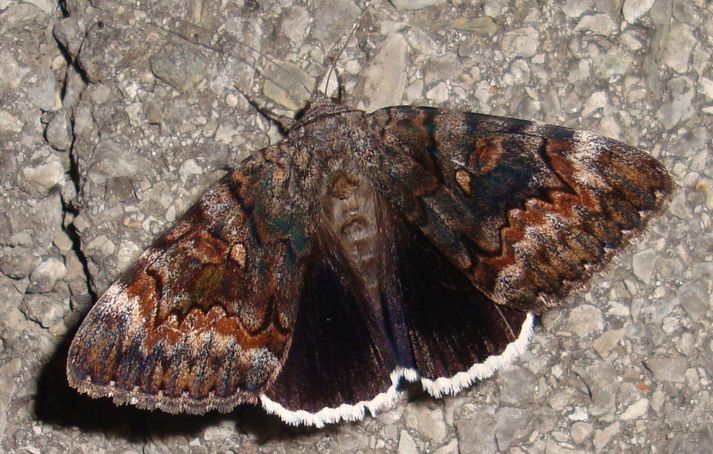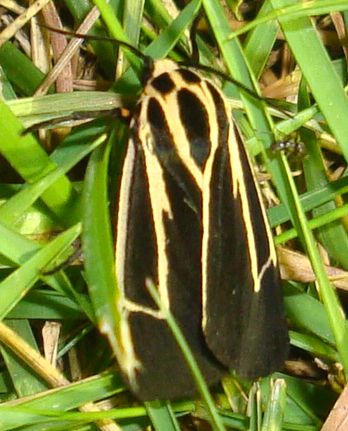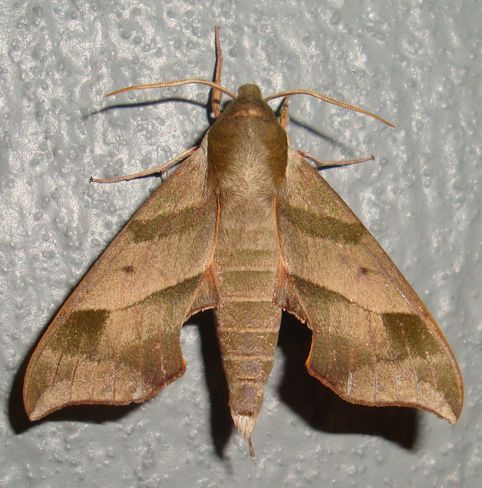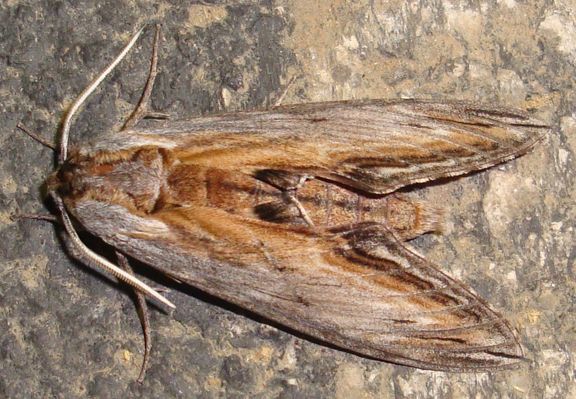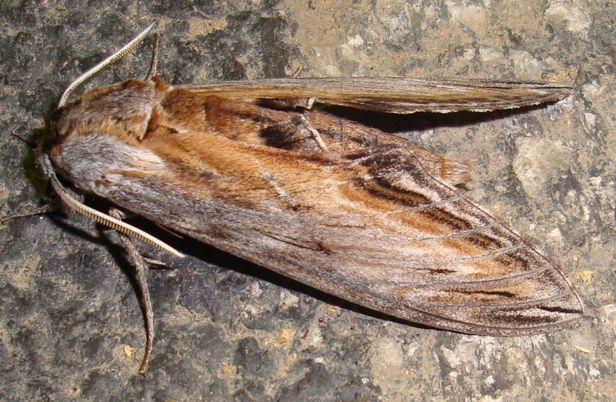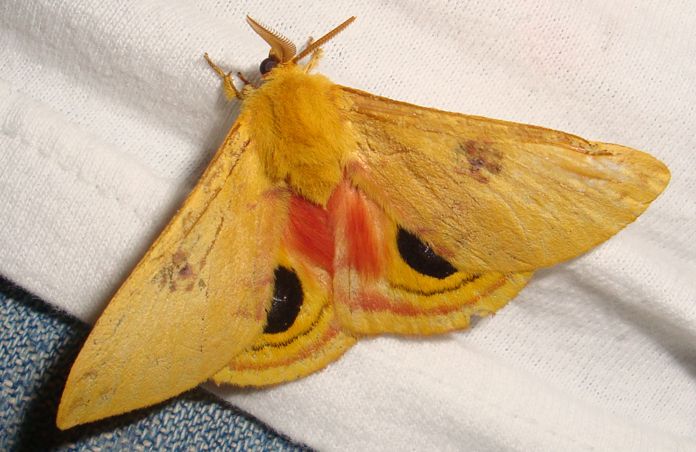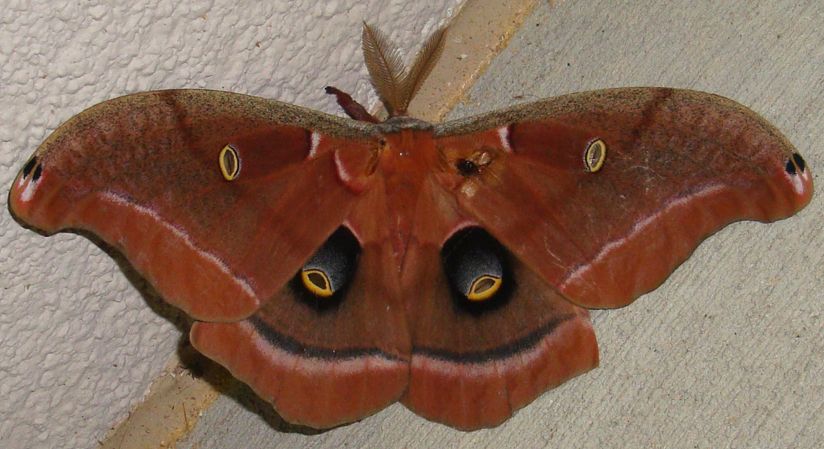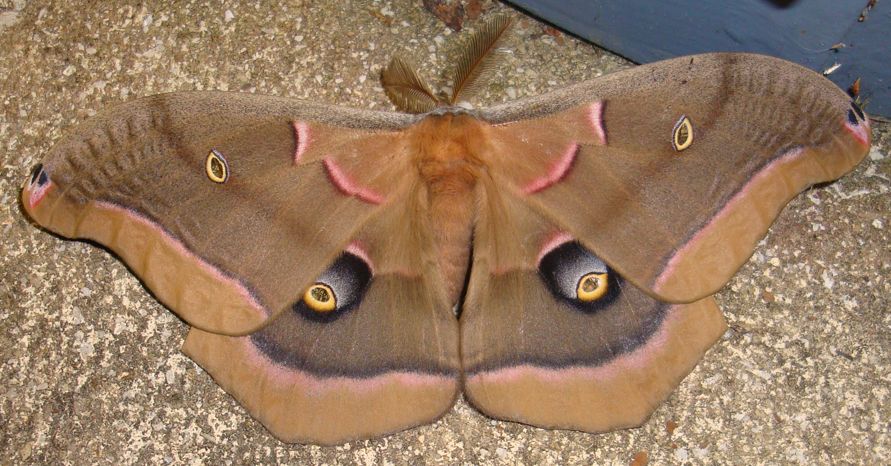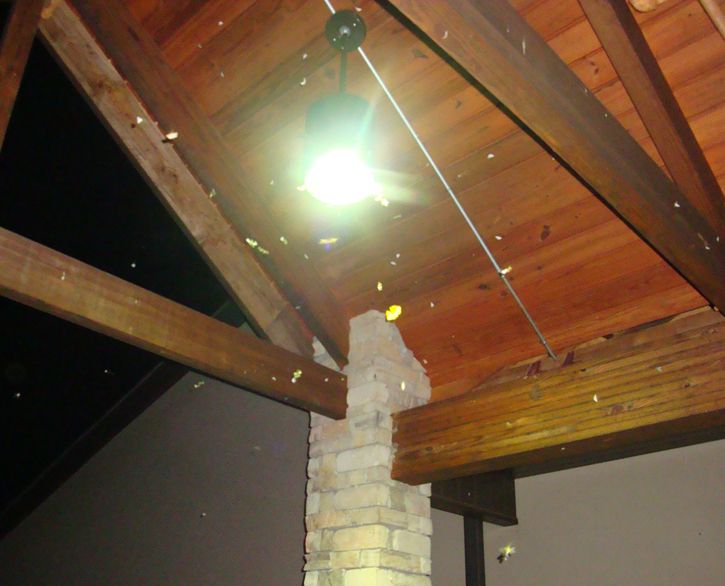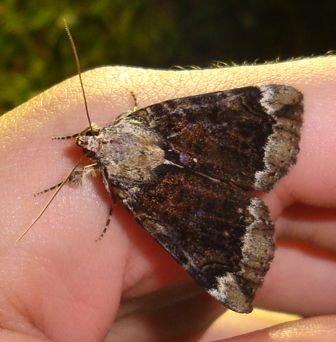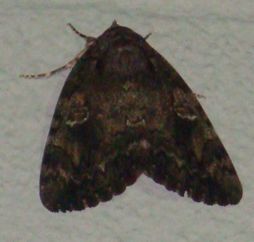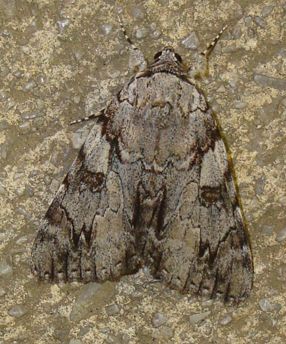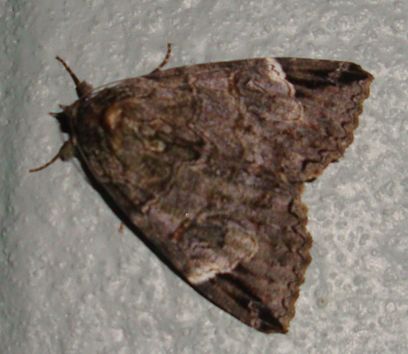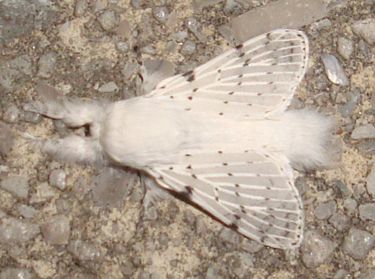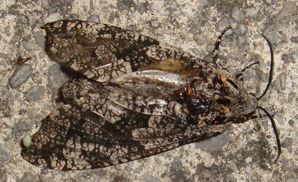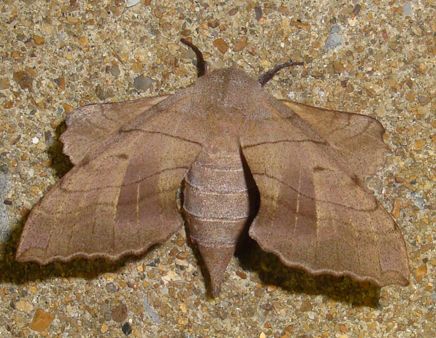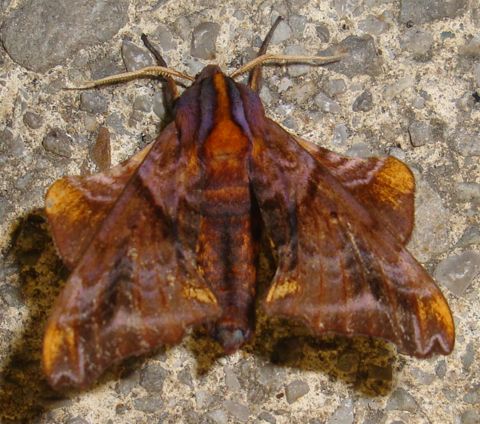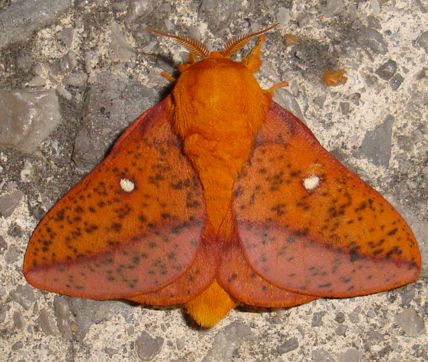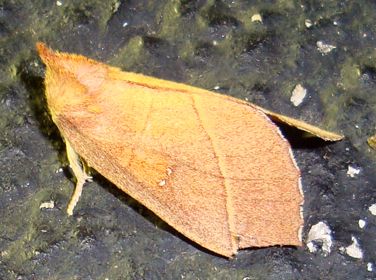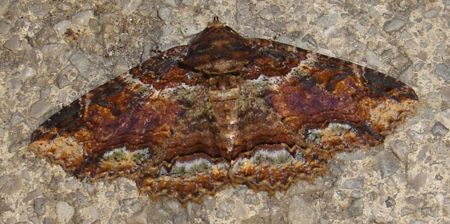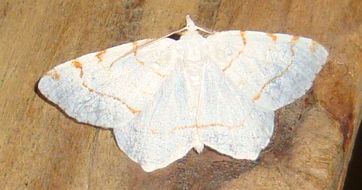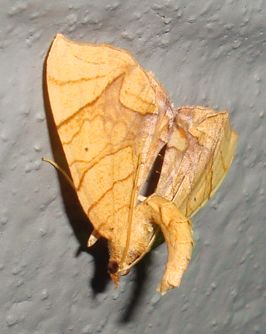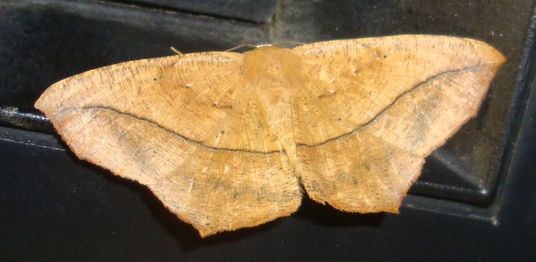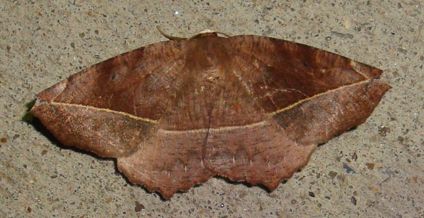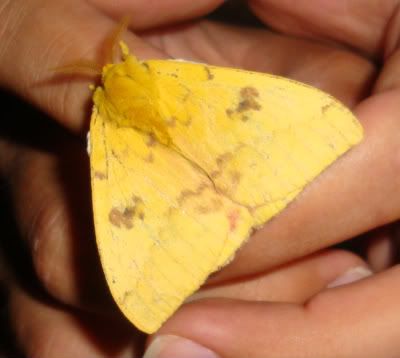[this spans a month's time, from 21 April 2009 to 21 May 2009; i have, of course, raised several caterpillars since, even from eggs, but this was my first ever caterpillar-to-moth/butterfly (moth, in this case) experience.]
an enormous black, spiny caterpillar was found during an evening walk, and taken home by me at the urging of my best friend, tim, since i have been very interested in observing the whole metamorphosis process of caterpillar to butterfly/moth, but had not yet come across a caterpillar this year 'til now.
he was brought home in a jar, and then placed inside a 10 gallon fish tank, along with some leaves of dandelions, honeysuckle and violets. i had identified him previously because of his distinctive orange bands which became visible when he curled up in defense mode. so, having identified the caterpillar as that of a Giant Leopard Moth, i found which kinds of food were most popular with that caterpillar and tried them all. the violet leaves seem to have been his preferred choice. i refreshed the supply of these multiple times a day.

after observing the caterpillar over a few days, i noticed that he was nocturnal, and would remain nearly motionless during daylight hours. eventually, however, he began to run around and around the tank day and night; this was unusual, and i thought that perhaps he was looking for a place to settle in for his transformation, but couldn't find a happy spot. he tried spinning silk in two different corners of the tank, but gave up eventually on each spot. i decided that there was something he needed that wasn't in the tank, that perhaps the glass was too slick for him and the silk to cling to easily. so i introduced a small cardboard box with a twig in it, the bottom of the box placed against the back of the tank so i could still observe the caterpillar. within one minute of me putting the box in the tank, the caterpillar was in it and only left once to come right back. he stayed in it, checking it out for about a day, then began weaving silk in the upper right corner of the box.
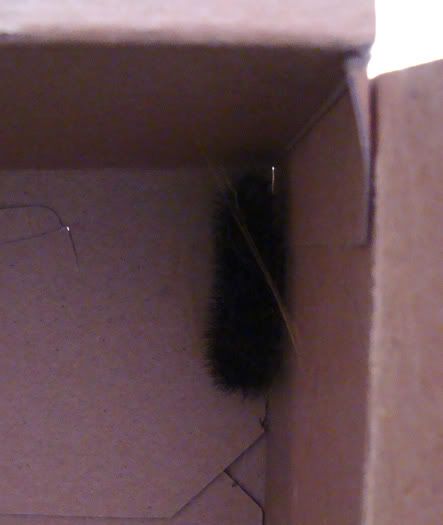
the next day, he had surrounded himself in that corner with a fine netting of silk, and remained motionless there now both during day and night.
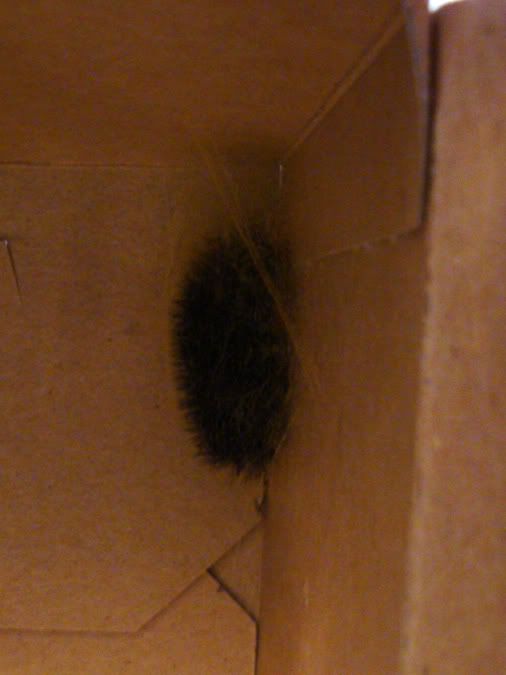
another couple of days later, and it appears that the cardboard box was just what he needed. he's now shedding his skin as he begins to pupate. unlike many moths, the Giant Leopard Moth caterpillar does not make a solid cocoon, but rather pupates directly within the fine netting he's woven.
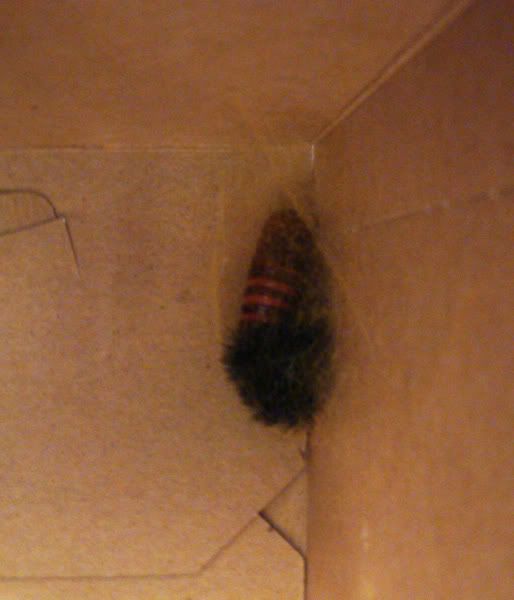

i started putting the box next to my pillow, so i would hear if it started to hatch while i was asleep.


this is the pupa removed from the silk netting; this doesn't harm it at all, so long as the pupa is handled carefully. this was done so that i could study the pupa form. the wing cases and body segments are well-outlined by the pupa casing and easily identified.
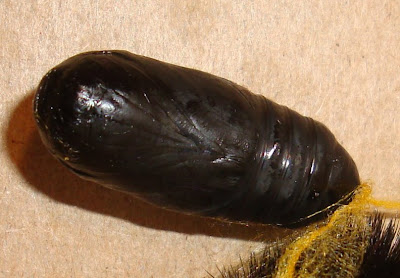
a Giant Leopard Moth is born, and it's a girl! (caterpillar found 4-21-09, pupa hatched 5-21-09; spent about 3 weeks as pupa)

 a Giant Leopard Moth in action
a Giant Leopard Moth in action (this is a photo of one found in the wild, not the one i hatched)
